‘Like my child had died’: For parents trying to help their kids, New Hampshire’s mental health system forces a hard decision
|
Published: 03-28-2025 3:14 PM
Modified: 03-31-2025 3:10 PM |
The top stair was Nicole Sheaff’s bed for months.
She slept with one eye open, waiting for her daughter Arlen to follow the voices in her head that told her to run.
To get out, Arlen would tiptoe down the narrow staircase over her mom – and then past her dad asleep at the bottom stair – and head out the front door.
Sixteen-year-old Arlen was stoic when she recounted what happened a few years ago. She ran away often, and that was bad. She was suicidal, and that was scary. It’s as if she’s watching a film back, with herself as the main character.
Most kids heading into middle school don’t know how to articulate their internal struggle with mental health and trauma, let alone ask for help. Arlen didn’t either.
Her exasperated parents did what most would do in a crisis: they looked for any and every solution to help their daughter.
An out-of-state live-in program was a last resort, but it meant Arlen would have professional 24-hour supervision and access to new therapists and psychiatrists.
Even though the facility was in Massachusetts, the distance from home worried Nicole. She felt natural skepticism about sending her child to a place so far away and unfamiliar. She wanted Arlen to feel loved and supported at home. She worried she was failing as a parent.
Article continues after...
Yesterday's Most Read Articles
 Northampton Housing Authority boss placed on leave
Northampton Housing Authority boss placed on leave
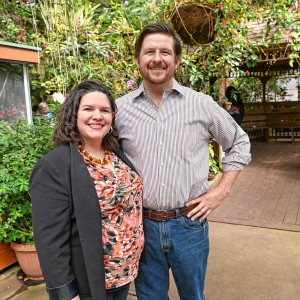 Hopeful buyers emerge for Magic Wings butterfly conservatory in South Deerfield
Hopeful buyers emerge for Magic Wings butterfly conservatory in South Deerfield
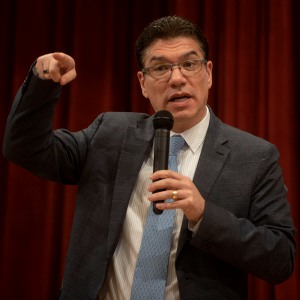 UMass Chancellor Reyes outlines changes amid financial uncertainty under Trump administration
UMass Chancellor Reyes outlines changes amid financial uncertainty under Trump administration
 Ready to roll on roads: Amherst priority list tees up $4.55M to rebuild some of town’s worst stretches
Ready to roll on roads: Amherst priority list tees up $4.55M to rebuild some of town’s worst stretches
 UMass hockey: Minutemen fall to Western Michigan, 2-1, in Fargo Regional final
UMass hockey: Minutemen fall to Western Michigan, 2-1, in Fargo Regional final
 Amherst School Committee OK’s budget with no classroom layoffs, but spending plan is $500K more than town recommends
Amherst School Committee OK’s budget with no classroom layoffs, but spending plan is $500K more than town recommends
“I blamed myself for so long,” said Nicole. “I was like, what haven’t I done? What haven’t I done? What haven’t I done? What haven’t I done? What did I do? What did I do?”
Arlen’s empty bed in the room she shared with her little sister was a stark reminder: New Hampshire lacked the support to help keep kids with the most critical mental health needs at home, an issue that continues to persist.
As a result, families like the Sheaffs often seek help from institutional settings. The state’s reliance on residential care is a self-inflicted crisis, says Geron Gadd, a senior attorney at the National Health Law Program.
It’s not that New Hampshire youth have higher mental health, behavioral challenges and emotional needs. Rather, the state has fewer options to prevent children from entering a live-in program and little support to transition them out of residential care.
“Children end up in an institution simply because it’s the only place that they can get intensive services,” said Gadd. “Then when they are institutionalized, they end up staying there for unduly long periods, not because of the level of acuity of their behavioral health needs, but because those services aren’t available outside of an institutional context.”
While investments in community-based services have increased in recent years, these programs are funded through an uncertain string of sources and plagued by long waitlists and complex insurance coverage.
Without intensive and available care, families are left with a decision no parent wants to make – whether or not their child should be sent away.
“It was very much like my child had died because of the grief, of the loss,” Nicole Sheaff said. “Did I do the right thing? The last thing I wanted to do was send my child away or make them feel like they were not wanted.”
On the inside cover of a manila folder, Nicole Sheaff has a faint timeline in pencil.
In one sense, it lays out the series of steps that dismantled her family before they could be reunited.
In another, the timeline represents a list of hard decisions that saved her daughter’s life.
Local and state police knew their two-story house in Exeter well. Their property backed up to the woods – great for haunted Halloween walks and neighborhood bonfires – but a maze for law enforcement looking for Arlen among the trees.
Inside, her parents tried their best to stop the searches. Cameras were mounted in the corner of their living room, among the Legos that stacked TV shelves. Small alarms were affixed to most doors and sharp knives were locked away in the kitchen pantry, next to chore charts and family calendars.
The setup was ineffective, not to mention unsustainable.
For 18 months, Arlen lived in a residential program in Massachusetts. A family photo on her bedroom wall comforted her between the 45 minutes of monthly visiting time.
“It was scary, honestly, because you were away from home and you didn’t know anyone, and you were scared because you weren’t with your family,” said Arlen. “It took me at least a couple months to feel comfortable living there.”
In New Hampshire, families can access these services without ever entering child protective services. The Bureau for Children’s Behavioral Health works with parents who still have custody of their child to match them with resources, like psychiatrists and therapists.
In the last year, an average of 70 children were in residential care through the voluntary state department. A number of children also access live-in programs through private insurance.
Those are figures the state acknowledges should be lower.
“What we know is that when children are receiving treatment in their community, they maintain those connections to family and community and have really positive outcomes,” said Daryll Tenney, the department’s bureau chief at a public meeting in February.
For Arlen, residential care spanned three live-in programs over the course of three years.
Waiting for her placement, she spent three weeks in hospitals, with no school, little stimulation and the cacophony of chaos that came with each new emergency patient.
Her first live-in program lasted 18 months. When she was released, the in-home help that her family once had was cut and her therapist said the case was over their head.
Her second placement was more of a holding facility that offered supervision, but no school. While her classmates back home learned about ratios in math and an introduction to chemistry in science, Arlen’s mother sent books and classroom packets to get her through the day.
The final placement offered the most intensive services, but New Hampshire Medicaid complicated an already intricate situation. Prescriptions could not be filled out of state and routine doctors appointments and dentist visits meant Nicole had to drive three hours north to pick her daughter up and drop her off again.
On and off, Arlen spent two years and three months in live-in care.
With the right support, Nicole wonders if it was a choice she could have been spared from making.
“We could have saved the state so much money if we didn’t have to do residential. If we had the right providers, if we had in-home support,” she said. “What’s right for each family differs. We have the ability and the education to provide a level of care in our home that is at a level of inpatient.”
When Hampstead Hospital opened in 2023, Governor Chris Sununu hailed New Hampshire as “a center of excellence” for children’s care.
The psychiatric hospital and residential treatment program for juveniles was the first of its kind in the state, with promises of providing care closer to home and outside of emergency room settings.
The state purchased the facility – which sits on a 100-acre campus in southern New Hampshire – for $13 million, and approved another $3 million expansion last year.
Along with the rest of the country, more New Hampshire youth are experiencing higher mental health needs in the wake of the pandemic. One in five kids still said they considered attempting suicide and nearly 40 percent of kids said they felt sad or hopeless, according to the 2023 Youth Risk Behavior Survey.
From a national health perspective, Gadd said scaling services to meet these needs is easier at home. Once an institutional bed is built, the staffing and business expenses only incentivize the provider to fill that placement.
“Institutional care is demonstrably more expensive than community-based services. That’s not just at any given point in time,” she said. “It’s about the state’s long term investment as well, and its ability to manage its mental health resources over time in a financially responsible way.”
While Sununu praised the facility as a key asset to keep children close to home, that hasn’t been the case for all kids.
The Office of the Child Advocate, the state’s only independent watchdog agency, has noticed a trend of children being discharged from the hospital and placed in other residential care facilities.
For Erin Downey, a 21-year-old from Derry, a 10-day stay at Hampstead was followed by a residential placement in California.
Downey graduated high school with crippling anxiety. With providers leaving insurance networks, in-state treatment, when available, was a start stop.
“My insurance ran out and I would not have a plan. I would not have an outside therapist. I would not have medication,” said Downey, who uses they/them pronouns. “Now I’m not only therapist-less, medication management-less, but I’m also withdrawing.”
Psychiatrists assured Downey’s mom that a live-in program would be the best – and only option – to help.
“My mom’s like, ‘I want my kid to feel better. Here we go.’ Both of us went into it thinking it would be a good thing,” said Downey. “We got to the doorstep and I don’t think I’ve ever felt the feeling of like I was teetering on the edge of something really good or really bad and I didn’t know what it was going to be.”
Research shows preventative systems that keep children at home are composed of three parts – coordinating intensive services among a team of providers, having access to in-home support and a mobile crisis response system.
New Hampshire is beginning to invest in this approach. But the care plan is only effective if the services are there to back it up.
In 2016, the state introduced Families and Systems Together, or FAST Forward, to provide care plans for families. Enrollment has skyrocketed with 584 families receiving support to address their kids’ needs as of January.
The program’s popularity underscores the need, but hides what’s well known in industry circles – a statewide shortage of mental health professionals that can thwart access to care.
Half of the state’s providers in the psychological association have ongoing waitlists and nearly 80 percent indicated they have difficulty referring clients elsewhere, according to a report from 2023.
Erin Downey sobbed into dessert at the Cheesecake Factory.
Brochures promised horseback riding and hikes, along with intensive therapy for teenage girls in Los Angeles – 3,012 miles away from New Hampshire.
That’s not what Downey’s mom heard about when they called home.
The promised therapy was hardly therapeutic. The beige walls were bare. Guidance from staff sent mixed messages. Toothbrushes were locked up for safety, but sharp knives were left out in the kitchen.
After a fellow resident at the house threw someone’s belongings off the roof and threatened to harm herself and others, everyone was shuffled into a white sprinter van and taken off-site. Cheesecake Factory was the destination but hardly the solution.
Before California, Downey was a high school student graduating from Pinkerton Academy. They could always be found on stage – in local theater productions, in gigs with a band or in a dance recital.
During the pandemic, social isolation mounted. As classmates returned to school, Downey stayed put.
“I didn’t go to dance. I didn’t go to school. Even when school resumed my senior year, I didn’t go back,” Downey said. “My anxiety just got out of control and I ended up going to the hospital.”
Downey’s story is one of dominoes. The lack of consistent therapy led to partial hospitalizations. They were in and out of treatment in New Hampshire until they hit a plateau with no other in-state option available.
The initial pitch was a 30-day residential stay.
Day 31 came and went and Downey remained in California. For three months, calls home were laced with tears and pleas for a pick up.
Communication from staff to parents was to ignore what the child was saying – treatment would be hard, they would be homesick, this was all normal.
“So I’m now feeling like my voice has been robbed,” said Downey. “I’m locked up in a place where nobody believes me.”
From behind the switchboard at the Bank of New Hampshire Stage, Downey controls the stage.
One button initiates blue flashing lights. Another push on the touchscreen panel illuminates a single spotlight center stage.
Three years after California, Downey works as a lighting designer and audio technician at concert venues across the state.
It takes time, perseverance and a little luck for the state’s most vulnerable kids fending for themselves after a residential placement to land on their feet
For Downey, returning home led to fights with family, lies to friends about starting college, and emotional agony over how to explain those missing months to their elementary-school-aged sister.
“I can’t even imagine, like, what that might have done to her,” said Downey. “That’s time I can never give her back of having her big sister. It’s a lot of time being away.”
Eventually, Downey packed up and moved out.
Repairing the relationship took months of honest conversation about what happened versus what was relayed home. One question always lingered, though: what if the placement was closer?
“If I were in Connecticut and she had visited me, would things have been different?” Downey said. “These are all things I’ve always wondered but how do you know when insurance is the only option? It was just so horrendous.”
Arlen is now a sophomore in high school who loves history.
“We get to learn from the mistakes of past people, but we also learn how they fixed it,” she said. “It’s sort of how I felt going through this transition. I messed up but I slowly got my way to fix it.”
Her mother was quick to correct her.
“I don’t think you messed up. I think it was you dealing with things that you shouldn’t have had to deal with,” Nicole Sheaff said.
In school a few months ago, Arlen had an assignment to write a letter about a person in their life who inspired them. She wrote about Nicole.
Any other family would have fallen apart – gotten divorced, given up or lost their child.
The Sheaffs didn’t. That was the only reassurance Nicole needed.
“I think the hard times bring us closer together.”
Michaela Towfighi can be reached at mtowfighi@cmonitor.com. This story was produced with help from USC Annenberg Center for Health Journalism’s 2024 Data Fellowship. To read the full series visit: https://nnedigital.ac-page.com/concordmonitor-sent-away-2025

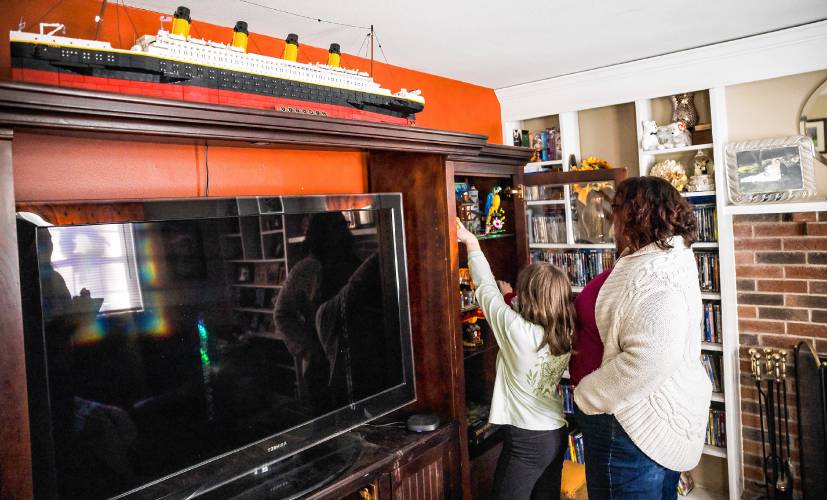
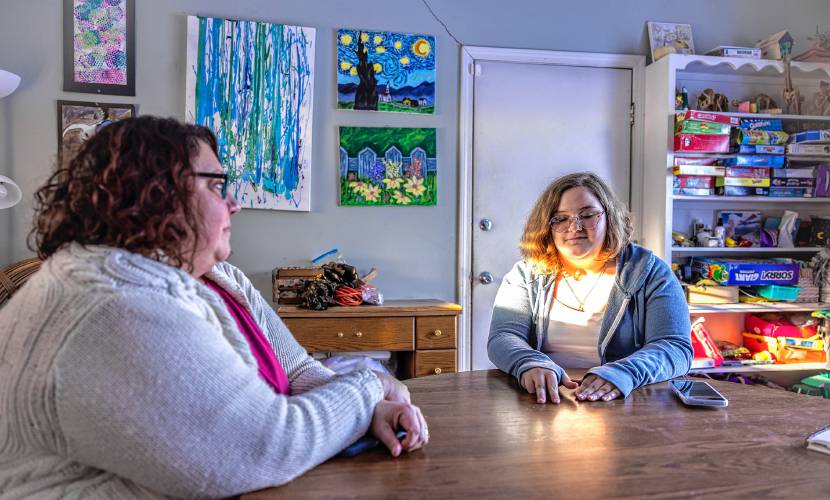
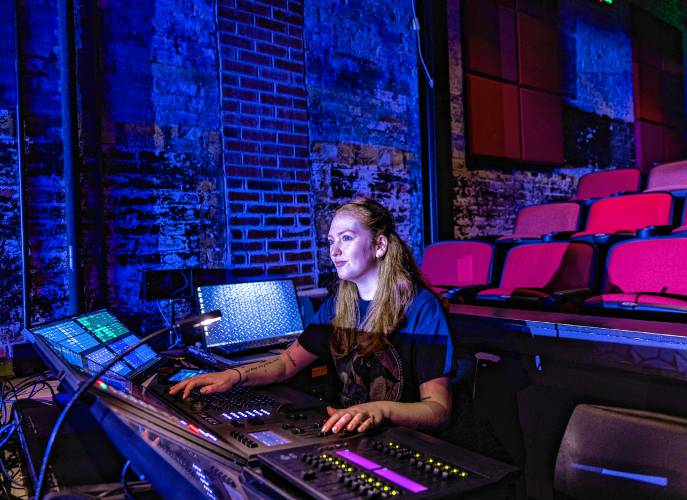
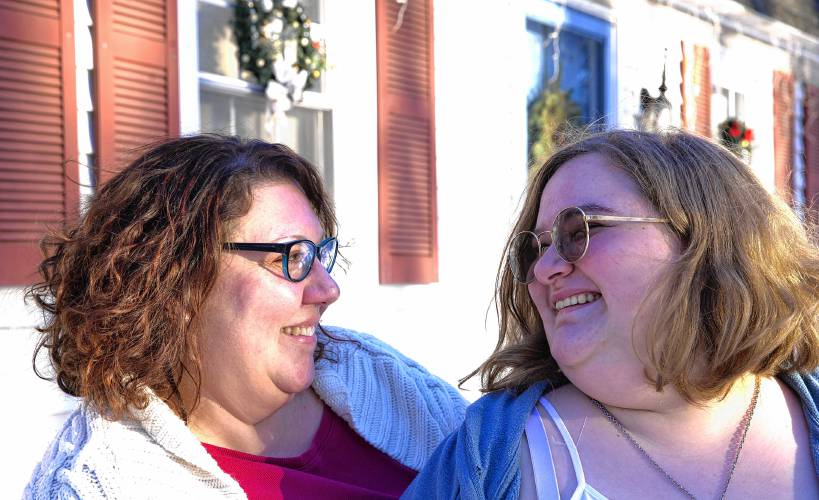

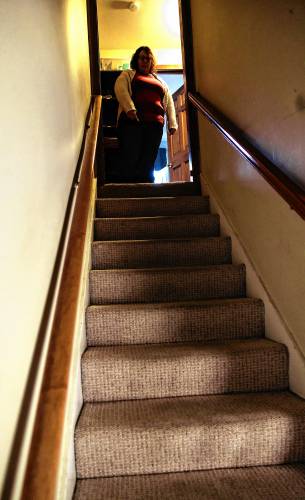
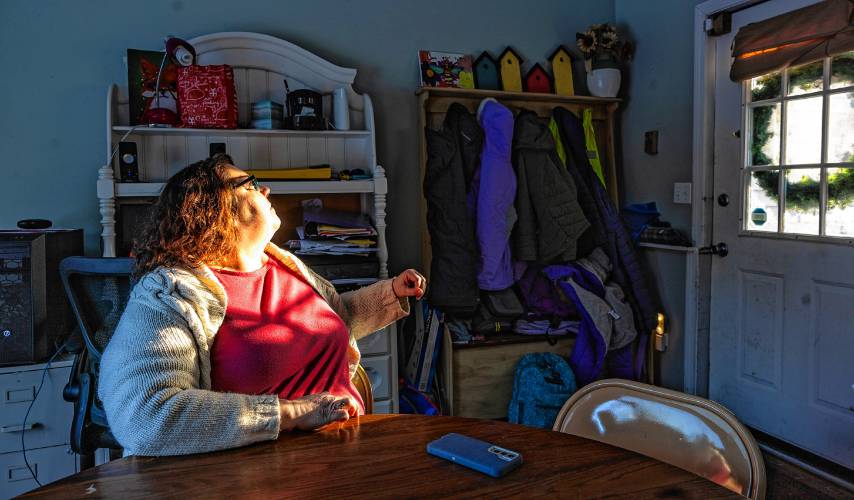

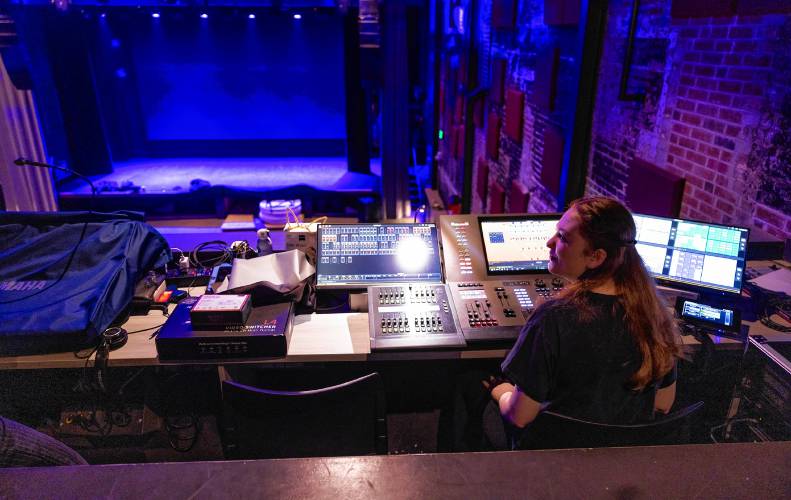





 MTA president offers ways for legislators to address ‘unprecedented dangers’ to K-12 education in state
MTA president offers ways for legislators to address ‘unprecedented dangers’ to K-12 education in state Nearly all of South Hadley High’s student body holds ‘walkout to walk-in’ rally to oppose cuts, call for funding reform
Nearly all of South Hadley High’s student body holds ‘walkout to walk-in’ rally to oppose cuts, call for funding reform ‘Wallace the Brave’ tumbles onto Gazette comics page
‘Wallace the Brave’ tumbles onto Gazette comics page ‘For the love of music’: Florence Community Band set to hold first-ever multigenerational concert
‘For the love of music’: Florence Community Band set to hold first-ever multigenerational concert
